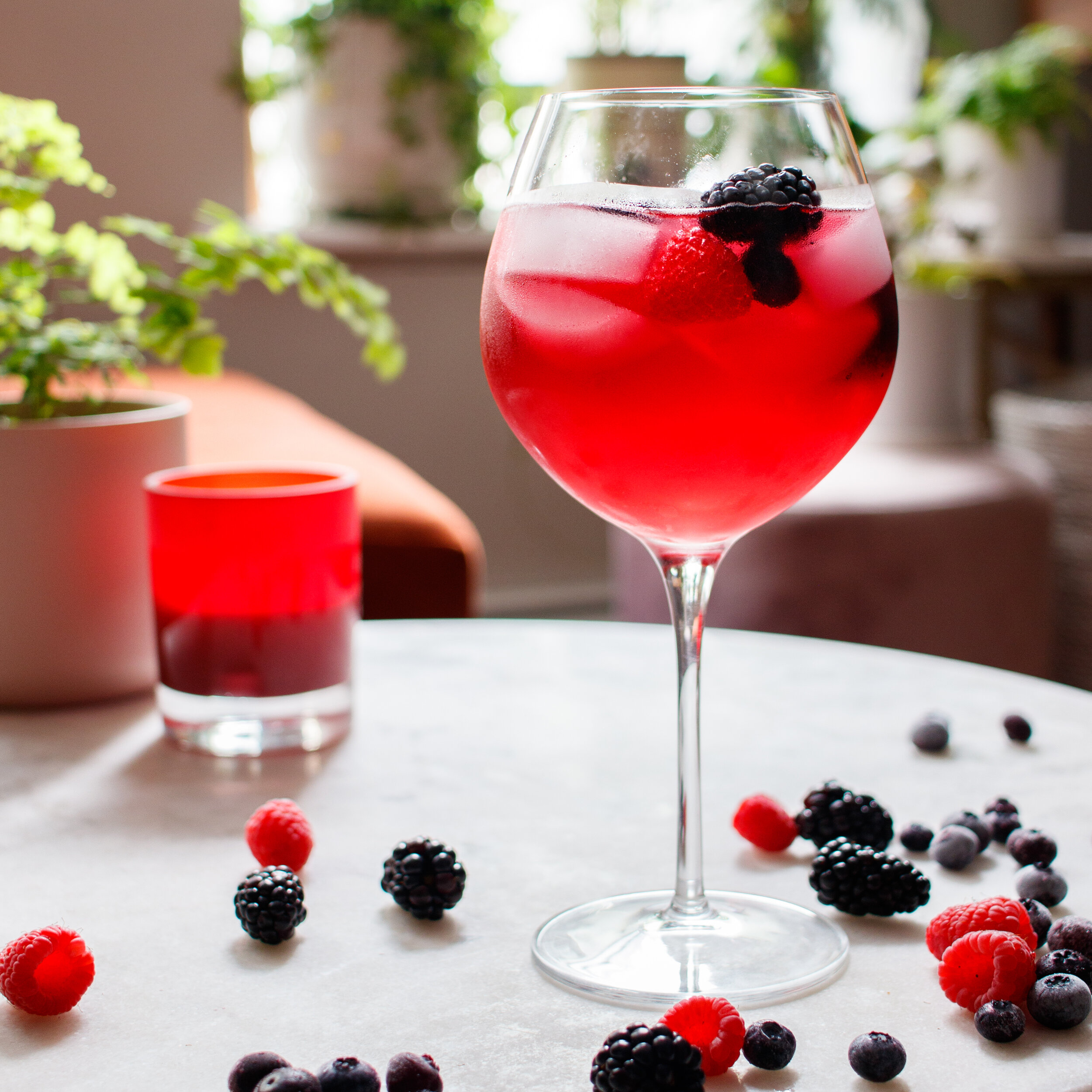According to the kitchn, all you need to remember to make a wine cooler at home is the ratio 4/4/2. You can create any flavor profile you want, as long as you use with 4 ounces wine, 4 ounces soda, and 2 ounces of liqueur.
We decided to go with the classic combination of dry white wine and lemon lime soda, and then 80s it up with some mixed berry flavored triple sec to create a homemade triple berry wine cooler.
Triple Berry Wine Cooler
4 oz dry white wine
4 oz lemon lime soda
2 oz triple berry triple sec (recipe below)
Fresh berries for garnish
Add ice to a large wine glass or pint glass. Pour wine, soda, & triple sec over ice and stir to combine. Top with a few fresh berries for garnish.
Triple Berry Triple Sec
16 oz Triple Sec
12 oz frozen mixed berries (ideally blackberries, raspberries, & blueberries)
Combine in a sealable jar and let soak for 24 hours. Strain out berries and refrigerate liquor.
Originally, wine coolers were something made at home using light, dry white wines mixed with lemon-lime soda. Essentially, they were just a tarted up version of a white wine spritzer.
By the early 1980s though, store bought wine coolers were being marketed as soda for adults. They came in individual size bottles with easy open twist off caps, and they contained real fruit, artificial fruit flavors, and cheap wine, with roughly the same alcohol content as beer (4-6%). Flavor-wise, they were kind of a combination of a wine spritzer and sangria.
According to the Chicago Tribune, in 1985, wine coolers accounted for close to 10% of all wine consumption in the United States. By 1987 at their peak popularity, that number was up to 20%, and wine cooler sales topped a billion dollars annually.
The original bottled wine cooler was called California Cooler, which was founded by a couple of southern California 20-somethings. Michael Crete, the cooler’s inventor said, “The gang would get together on the beach in Santa Cruz, and I would mix together all these tropical flavors—pineapple, grapefruit, lemon-lime, white wine, and a little bit of club soda.”
At the time, Crete was working in wine and beer sales, so he teamed up with his high school buddy with a business degree and they spent a year and a half perfecting the formula.
California Cooler took off like crazy. They were selling 10 million cases a year by 1984. But before long, the big wine producers like Gallo wanted in on the boom. They launched Bartles & Jaymes in 1985, flooding primetime TV with ads. Seagram’s followed suit, and before long California Cooler was losing market share and fast.
By 1987, wine coolers were EVERYWHERE, but by 88 & 89, people were starting to lose interest, and sales started to dip across the board. The real death knell for wine coolers though came in 1991 when Congress more than quintupled the excise tax on wine from $.17/gallon to $1.07/gallon.
This made wine blending a losing game and before you knew it, sweet carbonated malt beverages like Zima and Smirnoff Ice jumped in to take over the market. Bartles & Jaymes and Seagram’s both launched their own malt beverages, but California Cooler didn’t’ survive.

